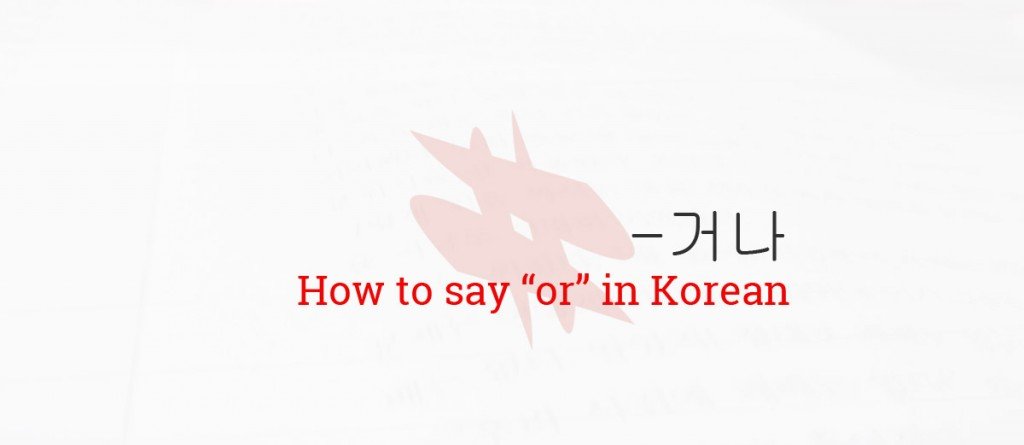– 거나 Grammar Lesson – or/either in Korean

– 거나 Grammar Lesson – How to Say “or” in Korean
In this lesson, we will look at the – 거나 grammar pattern to express “or” in Korean. Luckily for everyone, this is a very simple grammar to use! For more advances learners, there are also some variations of this pattern that we will also deal with further down this page.
Usage
- VST1 + 거나 VST2
- Both AVST (Verbs) and DVST (adjectives) can be used.
- Nouns can NOT be used. Instead, you should use the (이)나 grammar pattern
To use this, you attach -거나 to a verb or adjective (VST) and follow it up with another verb or adjective to highlight a choice between the two. For example:
[먹다] + 거나 + [자다]
먹거나 자다 (note that it’s not used after the second verb.)
= eat or sleep
Note that while you can list more than two choice, you will mostly see and use this with only two.
Only Verbs and Adjectives?
This grammar is very straightforward and it only comes in one shape. That is, it will be the same no matter what verb you combine it with. However, since it can only be used with verbs and adjectives, you might also want to know how to use it with nouns, as well as to put two sentences together.
To express a choice between two sentences (Sentence1 or Sentence2), you use 아니면 (아니다 + (으)면, literally meaning “if not”).
매운 것이 좋아요? 아니면 싫어요?
= Do you like spicy food? Or do dislike it?
As explained above, you can not use this grammar with nouns. To express a choice between NOUN1 or NOUN2, you use the pattern Noun1+(이)나 Noun2.
아버지거나 어머니 (X)
아버지나 어머니 (O)
= father or mother
For further detail and more examples, make sure to check out our lesson on (이)나.
Examples
내일은 영화를 보거나 등산을 갈 거예요.
= Tomorrow I will either see a movie or go hiking.
행복하거나 친구랑 있을 땐 술을 마셔요.
= When I’m happy or with friends I drink alcohol.
외로울 때는 책을 읽거나 영화를 봐요.
= When I’m lonely I read a book or watch a movie.
Variations of -거나 (for more advanced learners)
You will see a few different variations of this grammar. If you’re a beginner, don’t mind these for now, but do keep the fact that they exist in mind, in case you stumble upon one of them and are confused.
1. -거나 하다 can follow the second verb with no change in meaning:
뭔가를 보거나 듣거나 하면 꼭 알려 주세요
= If you see or hear anything, please let me know.
2. If you combine question words like 누구, 어디, 무엇, 언제 etc., with VST-거나 (간에) (the 간에 is optional), you highlight the irrelevance of that clause. It is however more common to use the
[Question word] ____+VST+든지 patternwhich is used to express the same thing. While all this might sound complicated, it makes more sense by looking at some examples:
무엇을 하건 간에 열심히 해야 돼요. (noticed how we contracted 거나 into 건)
= Whatever you do, you have to work hard.
나는 언제 일본에 가건 간에 친구를 만난다.
= Whenever I go to Japan, I meet my friend.
As you can see, the question words become “whatever” “whenever” “whoever” “wherever” and so on.
3. It can also be used to express “whether or not” by combined two opposites or different words (like 있다 and 없다):
좋아하거나 말거나 상관없다.
= It doesn’t matter wether you like it or not.
Please like or share if you found this lesson useful. And if you have any questions or something else on your mind, please let us know in the comments below and we will do our best to help you out!
Oh, and don’t forget check out our lesson on (이)나 if you haven’t already done so!
By: Kimchi Cloud





These grammar lessons really do help!
Thanks a lot~
Thanks a lot for the comment, Sang!!